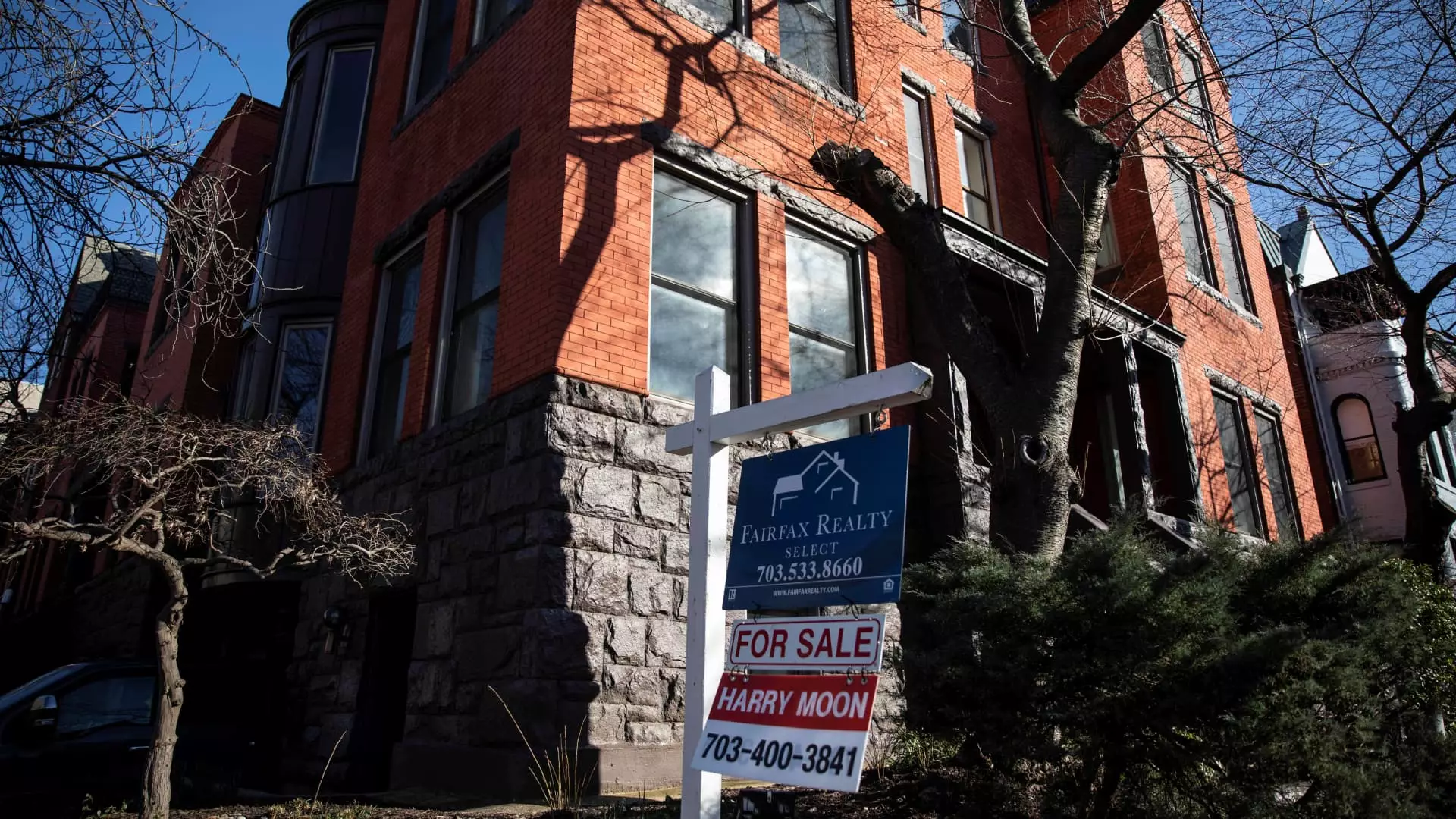The Washington, D.C. metropolitan area is witnessing a striking surge in housing inventory that is nearly unparalleled on a national scale. With a staggering 56% increase in active listings compared to the same time last year, it is imperative to delve into the ramifications of this stockpile of homes amid a backdrop of federal job instability and impending economic uncertainty. This dramatic uptick cannot be dismissed as mere seasonal adjustment; rather, it signals a troubling shift for the housing market, particularly in a region so heavily reliant on federal employment.
The Role of Federal Employment Instability
Mixed signals have reverberated through the D.C. area as rising home listings juxtapose against fluctuating job security in the federal sector. Delays and layoffs have stoked anxiety among potential buyers, creating a bottleneck effect in the market. According to Realtor.com’s chief economist, Danielle Hale, many home searches have stalled as residents grapple with the impact of prior federal funding cuts. The difficulty encapsulating a sense of stability amid such turbulent conditions compels many to reconsider their investment in a home—an emotional and financial decision of profound consequence. This hesitation raises essential questions about the future desirability of real estate in a region with such a fluctuating employment backbone.
The Anomaly of Rising Inventory
It is important to dissect why the spike in active listings is not solely due to a dramatic influx of sellers entering the market. In fact, new listings were only 24% higher from the previous year. The real propellant appears to be a deceleration in buyer activity. Culturally and economically, there’s a growing trepidation about committing to property in uncertain times, suggesting that the acceleration of listings could effectively be an overcorrection to a market brimming with anxious tenants. For many, the allure of homeownership is undermined by hesitance, leading to a paradoxical surplus of homes that exceeds the demand.
Impact of Newly Built Homes on Inventory
Another prominent factor influencing this trajectory is the robust construction activity seen throughout the D.C. metropolitan area. There has been a marked increase in the availability of newly built condominiums and townhomes that skew the traditional inventory landscape. While this increase further exacerbates the housing inventory growth, it also raises questions about market saturation. With the construction sector producing more housing relative to the prevailing demand, one has to wonder about the long-term viability of these investments. D.C. is increasingly leaning towards smaller, lower-end properties due to this construction surge, a trend that might indicate an oversupply crisis looming just beyond the horizon.
Implications for Housing Prices
While the median list price in the D.C. metro area has adjusted downwards by 1.6% year-over-year, the complexity of understanding this figure cannot be overstated. The fact that the national median price holds relatively stable, exhibiting only a 0.2% decline, is profoundly telling of a deeper divergence in housing materials across different markets. By factoring in square footage, we can glean that smaller, lower-end homes have saturated the market, putting further downward pressure on pricing. This reveals an uneven recovery; while some markets rebound, others remain stagnant. The disparity marks a worrisome trend in economic inequality, signaling that those with substantial means might enjoy growth, while others struggle to keep afloat.
Looking Ahead: A Cautionary Tale
It is not just Washington, D.C. that must tread carefully moving forward. The challenges presented by the fluctuations in federal employment and the resulting housing surplus can serve as a cautionary tale for other regions that are similarly dependent on government jobs. The housing market’s dynamics reflect more than just local trends; they reveal the intricate dance between employment stability and real estate investments across the nation. Ultimately, the confluence of these issues invites a reexamination of economic policies and local governance aimed at fostering resilience in housing availability and affordability amidst turbulent times.

